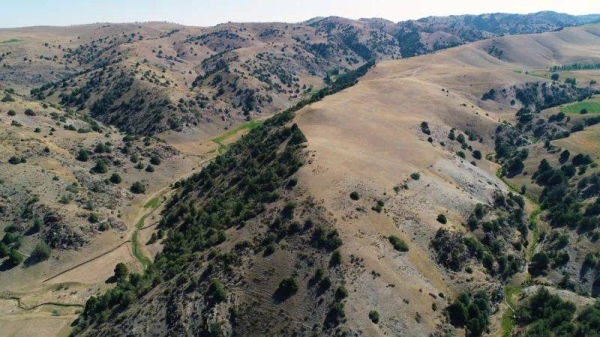Archeologists have made a groundbreaking discovery in eastern Uzbekistan, uncovering the remains of two medieval cities in the mountains. This finding challenges previous beliefs about the Silk Road, suggesting that highland cities were also key players in the trade routes. Tugunbulak and Tashbulak, both believed to have been bustling settlements between the 8th and 11th centuries, were uncovered using drone technology and lidar mapping. This discovery sheds light on the lifestyles of nomadic communities and the power dynamics of the region during the Middle Ages.
The discovery of Tugunbulak, a metropolis spanning at least 120 hectares at an altitude of more than 2,000m above sea level, is a significant find. Only 3% of the world’s population currently live above this altitude, making it a remarkable location for a medieval city. The research team, led by archaeologist Farhod Maksudov and Michael Frachetti of Washington University, used advanced technology to uncover walls, guard towers, and other fortifications in Tugunbulak. Preliminary excavations have revealed production kilns, indicating that the communities may have settled in these high-altitude cities to tap into the region’s rich iron deposits.
The team’s research, published in the scientific journal Nature, has been praised by experts for its significance in understanding medieval urbanism in Central Asia. The discovery of these high-altitude cities challenges traditional views of settlement patterns in the region, as scholars have typically expected to find evidence of settlements in lower valleys. The team’s work has provided valuable insights into the interconnectedness of different regions in Asia and the exploitation of natural resources over a thousand years ago. The discovery of these cities highlights the power dynamics and environmental impact of iron production in the region during the Middle Ages.
Initial skepticism from the academic community posed a challenge for the team, as they worked to document the cities scientifically and illustrate their significance. The discovery of Tashbulak in 2011, followed by the finding of Tugunbulak and its intricate architectural features in 2022, was a major breakthrough. The team faced logistical challenges, rough terrain, and harsh weather conditions during their research expeditions, but their perseverance led to the uncovering of these ancient cities. The use of lidar technology and drones allowed the team to visualize the cities in three dimensions, revealing a wealth of information about their structures and layout.
The communities that inhabited Tugunbulak and Tashbulak may have faced challenges due to their high-altitude location, including environmental instability caused by deforestation for iron production. The region was rich in iron ores, making it a strategic location for those who controlled the production of iron during medieval times. The discovery of production kilns and other artifacts in the cities suggests that iron played a significant role in the economy and power dynamics of the region. The team’s findings have opened up new avenues for research into medieval urbanism in Central Asia and shed light on the lifestyles of nomadic communities who settled in these high-altitude cities.
Overall, the discovery of these medieval cities in the mountains of Uzbekistan represents a significant milestone in archaeological research. The uncovering of Tugunbulak and Tashbulak challenges previous beliefs about settlement patterns along the Silk Road and provides valuable insights into the power dynamics and environmental impact of iron production in the region during the Middle Ages. The team’s use of advanced technology, including drones and lidar mapping, has allowed for a detailed exploration of these ancient cities, shedding light on the interconnectedness of different regions in Asia. These findings will pave the way for further research into medieval urbanism in Central Asia and deepen our understanding of the historical significance of the Silk Road trade routes.











